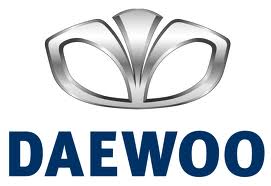Lanos S Hatchback L4-1.6L DOHC D-TEC MFI (1999)

Ball Joint: Testing and Inspection
BALL JOINT AND KNUCKLE
Ball Joint Inspection
1. Raise the front of the vehicle to allow the front suspension to hang free.
2. Grasp the tire at the top and the bottom.
3. Move the top of the tire in an in-and-out motion.
4. Look for any horizontal movement of the knuckle relative to the control arm.
5. Ball joints must be replaced if the following conditions exist:
-
The joint is loose.
-
The ball seal is cut.
-
The ball stud is disconnected from the knuckle.
-
The ball stud is loose at the knuckle.
-
The ball stud can be twisted in its socket with finger pressure.
Ball Stud Inspection
Make sure to check the tightness of the ball stud in the knuckle boss during each inspection of the ball joint. One way to inspect the ball stud for wear
is to shake the wheel and feel for movement of the stud end or the castellated nut at the knuckle boss.
Another way to inspect the ball stud for wear is to check the fastener torque at the castellated nut. A loose nut can indicate a stressed stud or a hole in
the knuckle boss.
Worn or damaged ball joints and knuckles must be replaced.
EXCESSIVE FRICTION CHECK
Use the following procedures in order to check excessive friction in the front suspension.
1. Enlist the help of another technician to lift up on the front bumper, raising the vehicle as high as possible.
2. Slowly release the bumper, allowing the vehicle to assume its normal trim height. See: Specifications
3. Measure the distance from the street level to the center of the bumper.
4. Push down on the bumper, release slowly, and allow the vehicle to assume its normal trim height.
5. Measure the distance from the street level to the center of the bumper.
6. The difference between the two measurements should be less than 12.7 mm (0.5 inch). If the difference exceeds this limit, inspect the control arms
, the struts, and the ball joints for damage or wear.
